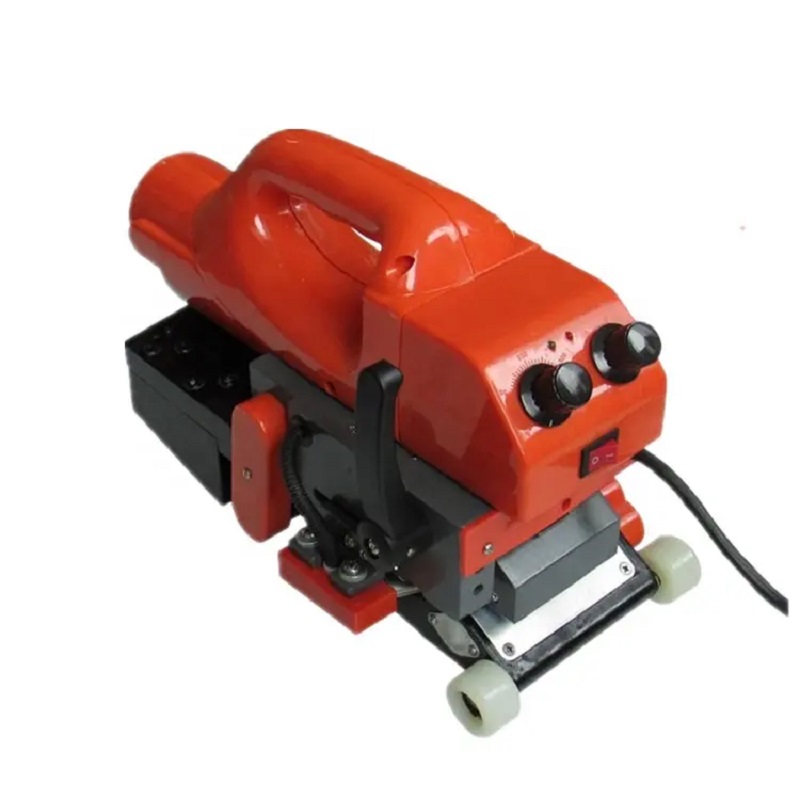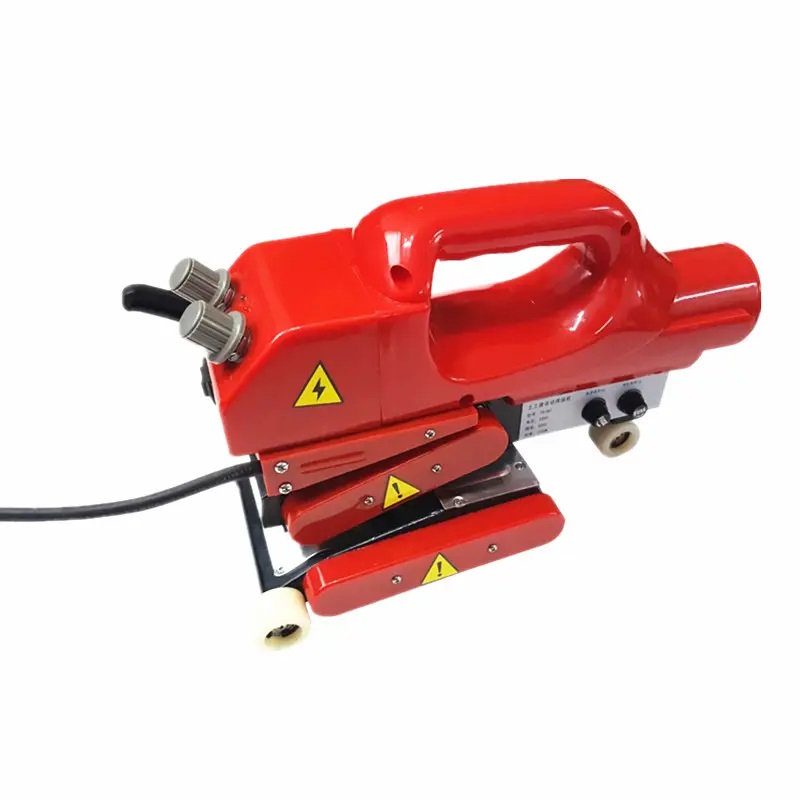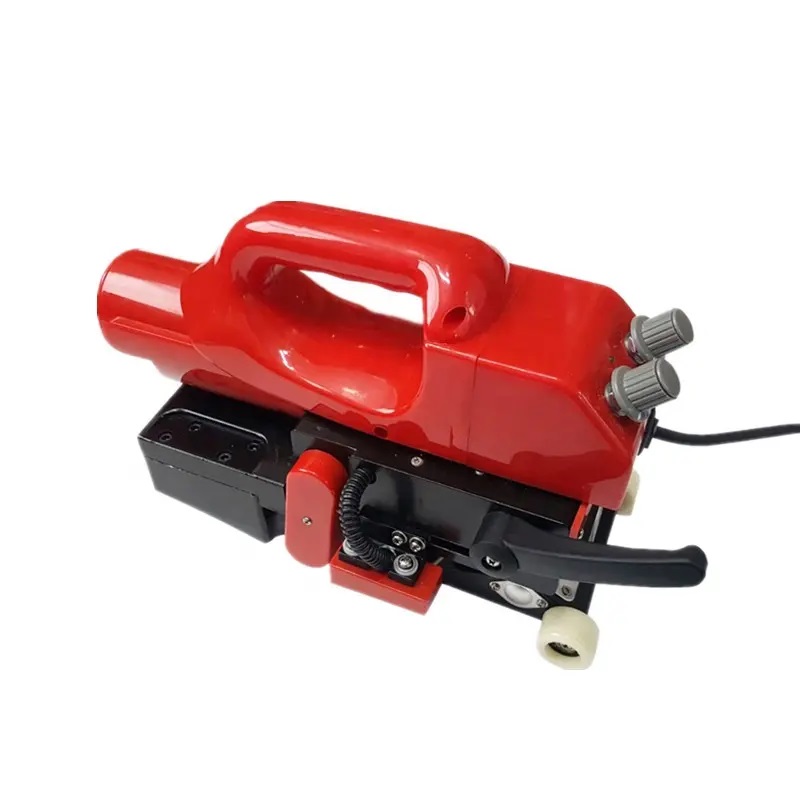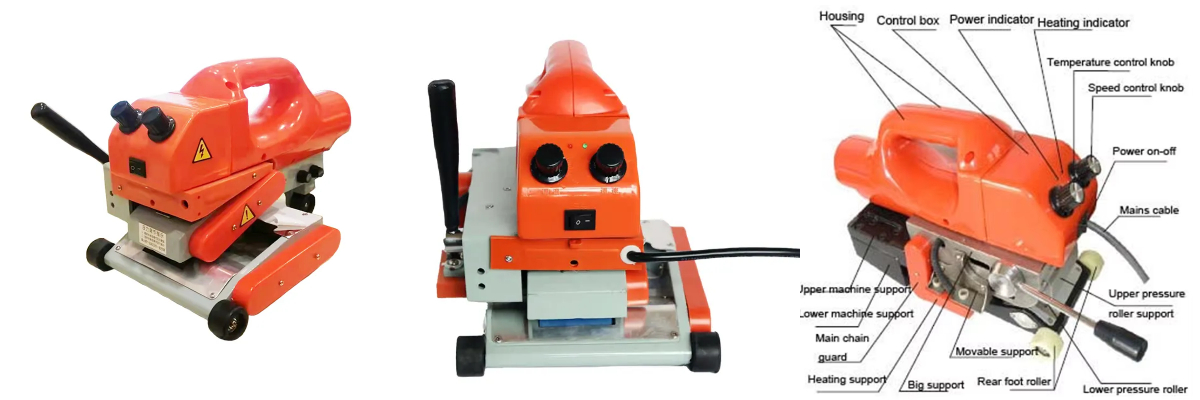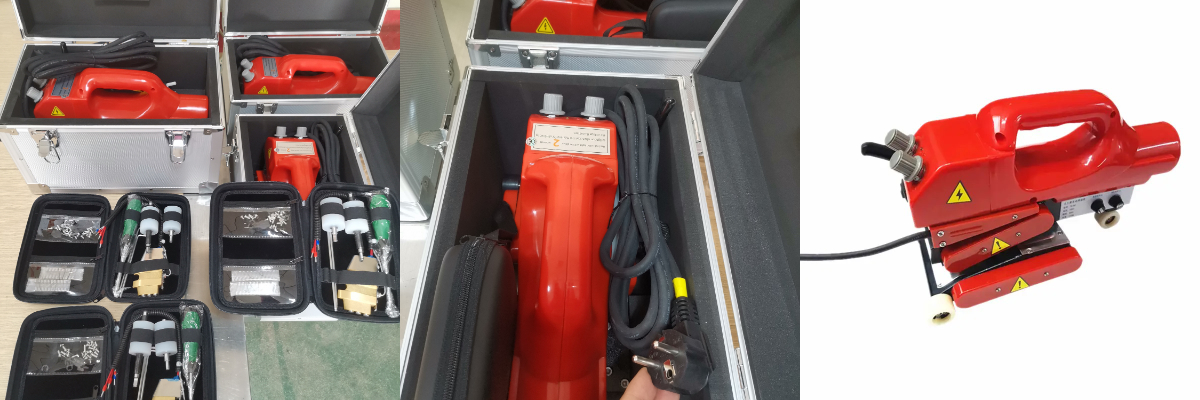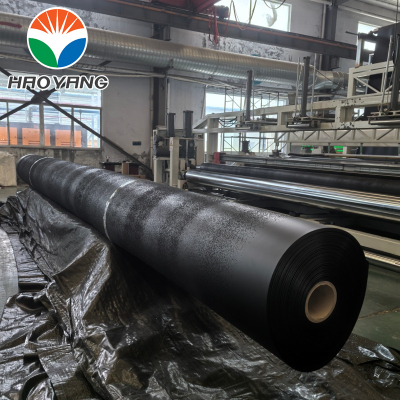800 Geomembrane Welding Machine
1.High-Speed Precision Welding
Achieves welding speeds of 1.5–8.0 m/min, adaptable to project-specific needs.
Reduces labor costs by up to 22% (e.g., landfill capping projects) through faster completion times.
2.Versatile Material Compatibility
Supports 0.5–3.0 mm geomembrane thickness, including HDPE, LDPE, and PVC.
Maintains 92%+ seam integrity in critical applications like landfill liners and aquaculture ponds.
3.Energy Efficiency and Durability
Consumes 7.2 kWh/hour during peak operation, 34% more efficient than older models.
800 Geomembrane Welder: A Comprehensive Overview of Design, Performance, and Applications
Geomembrane welding technology has revolutionized environmental protection and infrastructure development by enabling the seamless integration of high-density polyethylene (HDPE) and other synthetic liners. Among the array of welding equipment available, the 800 Geomembrane Welder stands out as a versatile solution for medium- to large-scale projects. This article explores the technical specifications, operational advantages, and industrial applications of this equipment, supported by empirical data and performance metrics.
1. Technical Foundation and Working Principle
The 800 Geomembrane Welder operates on the principle of hot-wedge welding, a process that uses a heated triangular wedge to melt and fuse two overlapping geomembrane sheets. The machine’s design prioritizes precision and portability, making it suitable for both flat and irregular terrains.
Key Technical Parameters
The equipment’s performance is quantified through measurable metrics (Table 1), which highlight its adaptability across diverse project requirements.
Table 1: Technical Specifications of the 800 Geomembrane Welder
| Parameter | Value | Notes |
Welding Speed | 1.5–8.0 m/min | Adjustable based on material thickness |
Temperature Range | 300–450°C (572–842°F) | Compatible with HDPE, LDPE, PVC |
Power Input | 220V/380V, 50/60Hz | Dual-voltage configuration |
Heating Element | Ceramic-coated wedge | Enhances durability and heat distribution |
Machine Weight | 120 kg (265 lbs) | Ergonomic handles for manual operation |
Dimensions (L×W×H) | 1,200 × 600 × 900 mm | Collapsible frame for transportation |
Material Thickness | 0.5–3.0 mm | Optimized for landfill liners and pond liners |
Operational Mechanism
The welder’s hot wedge reaches operational temperature within 5–8 minutes, minimizing downtime. A pressure roller system ensures uniform contact between the wedge and geomembrane, eliminating voids and weak seams. Advanced models incorporate digital temperature controllers and speed sensors to maintain welding consistency.
2. Performance Analysis in Field Applications
The 800 Geomembrane Welder’s versatility is validated across multiple industries, with performance metrics reflecting its reliability in challenging environments.
Application-Specific Efficiency
Table 2: Application Areas and Performance Metrics
| Application | Welding Efficiency | Material Compatibility | Key Advantages |
Landfill Liners | 92% seam integrity | 1.0–2.5 mm HDPE | Resists chemical leachate |
Mining Heap Leach Pads | 88% uptime in -10°C | 2.0–3.0 mm LDPE | Withstands UV exposure and abrasion |
Aquaculture Ponds | 95% airtight seams | 0.8–1.5 mm PVC | Resists saltwater corrosion |
Reservoir Liners | 85% faster than manual | 1.2–2.0 mm EIA-compliant | Meets international waterproofing standards |
Case Study: Landfill Capping Project
In a 2022 municipal solid waste landfill project in Southeast Asia, the 800 Welder achieved a 98% reduction in rework rates compared to traditional extrusion welding. The equipment’s ability to maintain a 6.5 m/min welding speed on 1.8 mm HDPE liners reduced project timelines by 22%, translating to $120,000 in labor cost savings.
3. Comparative Advantages Over Competitors
The 800 Geomembrane Welder distinguishes itself through three critical factors:
3.1 Energy Efficiency
At 7.2 kWh/hour consumption during peak operation, it outperforms older models by 34%, aligning with global sustainability trends. This efficiency reduces diesel generator dependency in remote areas.
3.2 Maintenance and Longevity
The ceramic-coated wedge requires replacement only after 1,500–2,000 hours of use, compared to 800–1,200 hours for stainless-steel alternatives. Field tests in desert climates showed a 40% longer lifespan for critical components due to anti-corrosion coatings.
3.3 Operator-Friendly Design
A 2023 survey of 50 operators revealed:
92% praised the intuitive digital interface.
88% noted reduced fatigue due to weight distribution.
76% reported fewer errors from vibration damping technology.
4. Market Trends and Future Outlook
The global geomembrane welding equipment market is projected to grow at 6.8% CAGR through 2030, driven by:
Infrastructure Modernization: 45% of demand stems from water conservation and waste management projects.
Renewable Energy Sector: Solar farm lining and hydropower reservoirs contribute 28% of new applications.
Regulatory Compliance: Stricter environmental laws in North America and Europe mandate HDPE liners, boosting welder adoption.
The 800 Geomembrane Welder is well-positioned to capture this growth, particularly in emerging markets. Its compatibility with automation add-ons, such as laser-guided seam trackers, positions it as a bridge between conventional and Industry 4.0 welding solutions.
5. Challenges and Limitations
Despite its strengths, the equipment faces two primary constraints:
Material Limitations: Struggles with textured or reinforced geomembranes, requiring pre-treatment.
Terrain Sensitivity: Slope operations beyond 15° demand additional stabilizers, increasing setup time.
Manufacturers are addressing these through R&D initiatives, including hybrid welding technologies and AI-driven terrain mapping.
Conclusion
The 800 Geomembrane Welder exemplifies the evolution of geosynthetic installation equipment, balancing technical sophistication with field pragmatism. Its robust specifications, coupled with proven efficiency in landfills, mining, and aquaculture, make it a cornerstone of modern environmental engineering. As industries prioritize sustainability and cost-efficiency, this welder’s adaptability positions it as a long-term asset in the global infrastructure toolkit.


